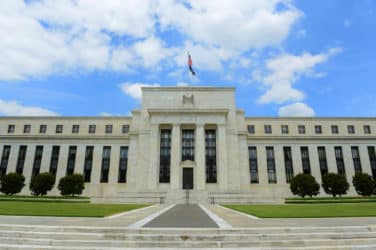Silence is golden.
And that’s what is expected of the U.S. equity trading markets in the coming week. The March jobs report was a dud – at least the headline number — and trading reflected that. The Dow Jones Industrial Average failed to break out of its current trading range and any short-term volatility that the weaker-than-expected employment report brought failed to jump-start trading.
The marquee report last week was the March employment report which was, according to traders, a bit of a disappointment in terms of job creation (+98K v estimates of +180k) but provided some degree of market volatility prompting some activity. But any major trade was tempered by the fact that February and March saw some winter weather which economists believe skewed the data. Also, many believe that despite the actual number that nothing will stop the Federal reserve from raising rates at least twice more this year.
“At the end of it all, the market is pretty much back where it started the day and was all week – between 20,000 and 21,000,” a floor trader said. “The market, in my opinion, remains cautious and mired in the current trading range.”

Larry Peruzzi, Mischler Financial
Trading on U.S. equity exchanges rose modestly to 6.66 billion shares per day compared to the 6.21 billion shares for the week ended March 31. Just two weeks ago trading averaged 7.52 billion shares per day, according to Bats Global Markets data.
“As we head into the next week U.S equity markets find themselves little changed from last Friday and the prior week,” said Larry Peruzzi, managing director, international equities sales/trading at Mischler Financial Group. “It’s peculiar given the pace of news coming out of Washington and the Fed. What is becoming apparent is that risk appetite is souring but there is enough optimism to keep the markets in a status quo pattern.”
Peruzzi noted that the VIX index trading range has been between 10.58 and 13.22 the entire year to date. Friday’s jobs data failed to push volatility out of that range and last week’s economic numbers that showed some modest improvement in ISM Employment, ADP employment change and Durable goods orders, the market still is listless.
“Looking ahead to the Easter shortened week the economic and earnings calendar are light,” Peruzzi said. “Market highlights begin on Thursday are March PPI numbers and April’s Michigan sentiment readings, as well as 1Q earnings season begins the following week. Just a handful of earnings are due for Thursday which include PNC financial, JP Morgan, Wells Fargo and Citigroup.”
This week will see Federal Reserve Chair Janet Yellen speaking at the University of Michigan’s Ford School of Public Policy – and the subsequent question-and-answer session that follows could give Fed watchers something to trade on. With the exception of the constant flow of news out of Washington, the markets will be digging for news and direction, Peruzzi added.
“Lack of earnings growth could certainly trigger the ‘sell in May and go away strategy,’ but would an executive order here and a nuclear option there be enough to keep investors hanging in the market,” he asked.
In other market news, the Equity Market Structure Advisory Committee met last week and recommended a review of a stock market rule that effectively forces stock orders to be sent to the exchange displaying the best quoted price – the order protection rule.
The “order protection rule” was put in place in 2005 as part of a broader framework known as Regulation National Market System, or Reg NMS. It was aimed largely at ensuring retail investors get the best price possible and prevents trades from being executed at prices that are inferior to bids and offers displayed on other trading venues.
But critics of the rule say it has created a more expensive, fragmented market where high-speed traders have an advantage, and that it should be replaced with more robust rules around best execution.
Some traders take issue with the rule because it forces brokers to cover the expense of connecting to all 13 U.S. stock exchanges to ensure they can access all protected stock quotes, regardless of how much – or little – trading occurs on those exchanges.
Also, trade cost analysis (TCA) was in the news. First, a recent report from Greenwich Associates Tnoted that the buy side is increasingly looking to trade cost analyst – TCA – to help it meet its growing mandate for transparency. The pressure comes amid new regulations from the regulators, legislators or even Joe Q Public.
And the need for TCA is not just for equities trades anymore. As the buy side has entered an era of multi-asset trading – foreign exchange, fixed income securities and other asset classes – TCA has been the analysis tool of choice, according to a recent report from market consultancy Greenwich Associates.
The report, “Transaction Cost Analysis: Opportunities Within and Across Asset Classes,” noted that asset managers are relying on TCA systems to give them increased transparency into their execution and order routing in order to optimize trading performance while meeting the demands of regulators seeking documentation of best execution compliance.

Kevin McPartland, Greenwich Associates
Also, the market consultancy reported that more than one quarter of buyside traders in the US and UK are using tools for transaction cost analysis in foreign exchange, which is now a major input to execution strategies. Kevin McPartland, head of research for the market structure and technology practice at Greenwich Associates, said in a report that increasing efficiency on the desk is currently the biggest focus for head traders and nearly half of buyside foreign exchange desks now use vendor-provided order management systems.
“Over one-quarter in the US and UK are using FX transaction cost analysis tools, whose output is now a major input to execution strategies,” added McPartland. “And the growth of multi-product trading continues to climb, with nearly 60% of FX spot traders also trading derivatives.”
He expects the trend toward smarter, more automated trading to continue. The consultancy interviewed 78 buyside traders across the globe trading foreign exchange between June and August last year.
This Week’s U.S. Economic Indicators of Interest:
| Monday | Labor Markets Condition Index
|
| Tuesday | Redbook Retail Sales
Neel Kashkari Speaks |
| Wednesday | Import/Export Prices
Atlanta Fed Business Inflation Index Treasury Budget Statement |
| Thursday | Jobless Claims
Producer Price Index Consumer Sentiment |
| Friday | Markets Closed for Good Friday Holiday
Consumer Price Index Retail Sales Business Inventories |





